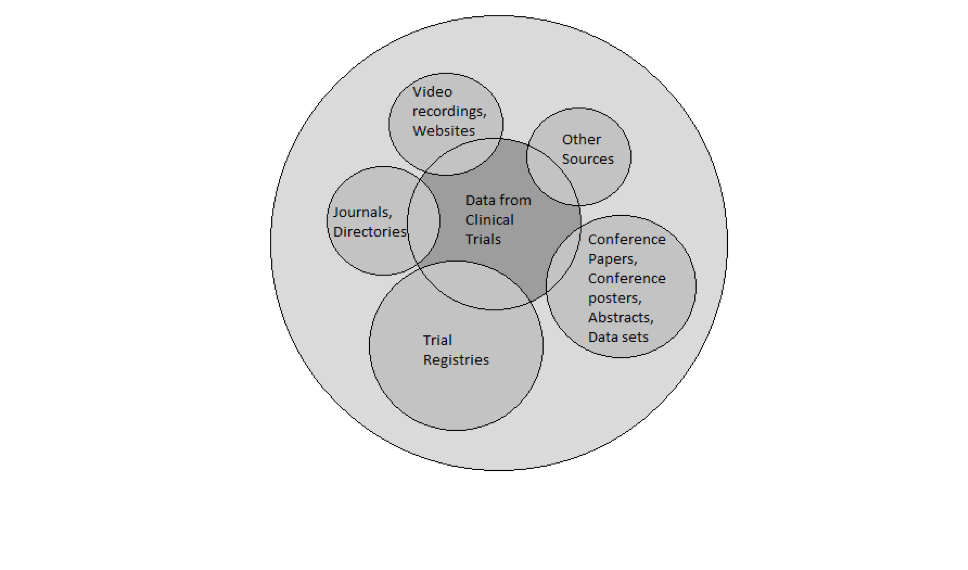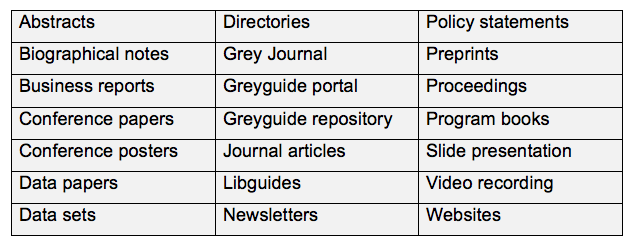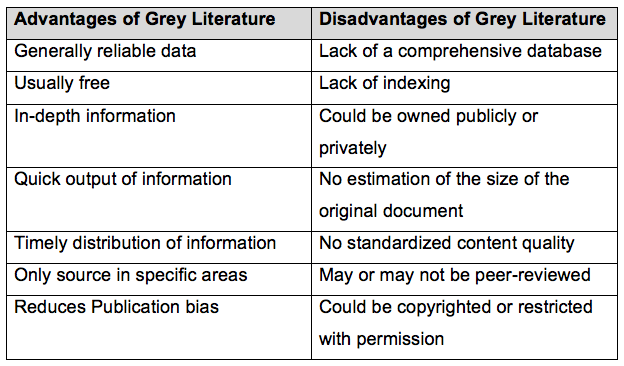Grey literature and their sources
Posted on 7th May 2021 by Vighnesh D

The following discussion will attempt to define grey literature and its possible sources.
Contents:
- Introduction to grey literature
- Classification of sources
- Discussion
- Conclusion
- References
Introduction to grey literature
Broadly speaking, a “Grey Literature” is any document that is generally not formally or commercially published, which makes its retrieval, reproduction, or citation a difficult job.
In the past, it has been subjected to various modifications, both in terms of definition and its utilization as a scientific tool. The most accepted definition of grey literature is the Prague definition ( Joachim Schopfel, 2010):
Grey literature stands for manifold document types produced on all levels of government, academics, business, and industry in print and electronic formats that are protected by intellectual property rights of sufficient quality to be collected and preserved by library holdings or institutional repositories, but not controlled by commercial publishers i.e. when publishing is not the primary activity of producing body. [1]

Modified diagram from the original source of: https://libguides.vu.nl/greylit
Classification of sources
Over the years, a wide variety of documents have been introduced under the umbrella of grey literature. The attempt to define and segregate grey literature has resulted in the inclusion of sources from diverse areas. Some of them are as follows: [2]

Other documents like surveys, government reports, maps, fact sheets, theses, and dissertations are also included.
The Canadian Agency for Drug and Technologies in Health (CADTH) has developed a search tool called Grey Matters [3] to identify grey literature in the year 2018, which was subsequently updated in April 2019. It includes websites comprising of the following contents:
- Health Technology Assessment (HTA) agencies of several countries like Canada, Australia, Belgium, Norway, Sweden, and so on.
- Health Economics of Canada and other regions.
- Clinical practice guidelines of Canada and other regions.
- Drug and device regulatory approval of Canada and other regions.
- Drug Class reviews.
- Clinical Trial Registries.
- Canadian Drug Formularies.
- Free and Subscription-based Databases.
- Health Statistics of the US, Canada, and international regions.
- Other websites on behavioural change, mental health, diagnostic test, nursing, for example.
Additionally, there are several other sources [4] as well where one can look for grey literature. These consist of several producers and collectors of grey literature that are as follows:
- OpenGrey
- New York Academy of Medicine’s Grey Literature Report
- TRIP Pro
- Health Canada
- Health Quality Ontario
- Canadian Institute for Health Information
- OAIster
Discussion
Now that we have defined and classified the sources of grey literature based on their availability, impact, and types, it is only natural that we further attempt to understand the nature of grey literature, its advantages and disadvantages, and its uses.
It is now established that grey literature is, in essence, documents that are not published or not available on a standardized and regulated platform like mainstream research publications are, e.g.: Peer-reviewed journals, published abstracts, etc. However, they are available in formats that are not traditionally considered to be “publishable” or due to some reasons, remain unpublished. Therefore, the search for grey literature may entail the identification and regular usage of several tools and search engines such as SCOPUS, Embase, CINAHL, and Google Scholar. This might seem like an unconventional method for retrieval of data for research purposes, however, due to reasons such as less availability of information over a particular subject and lack of regulated access towards journals makes grey literature one of the most significant aspects of several studies.

What are the uses of grey literature?
- Literature Reviews – for research, thesis, or personal projects.
- Systematic Reviews – to build a reliable body of knowledge through research synthesis over a specific topic. This includes both reducing publication bias as well as getting high-quality output.
- Scoping reviews – to know the scope of a specific topic.
- An excellent source of raw data and data sets that are otherwise inaccessible.
- Covers often “missed” information.
- Superior source of information in policies and programs.
Conclusion
As we have discussed, grey literature is a unique set of data that can be used as a potent tool for a wide range of studies. However, grey literature has its fair share of drawbacks, the greatest of them being that it is a time-consuming process. Saleh et al. in 2014 concluded that the median time spent searching all resources was 471 minutes, and of those, a median of 85 minutes was spent searching for grey literature. [5] Apart from that, there is no gold standard method for searching grey literature, nor is there a defined methodology for the same, which makes it all the more difficult. [6] However, that being said, grey literature continues to remain an important source of information in methodologies as well as reviews.
References (pdf)
You may also be interested in the following blogs for further reading:
Literature searches: what databases are available?
Conducting a systematic literature search
Reviewing the evidence: what method should I use?
Publication bias: The answer to your research question may be sitting in somebody’s file drawer




No Comments on Grey literature and their sources
Very interesting!
16th August 2021 at 5:50 pm